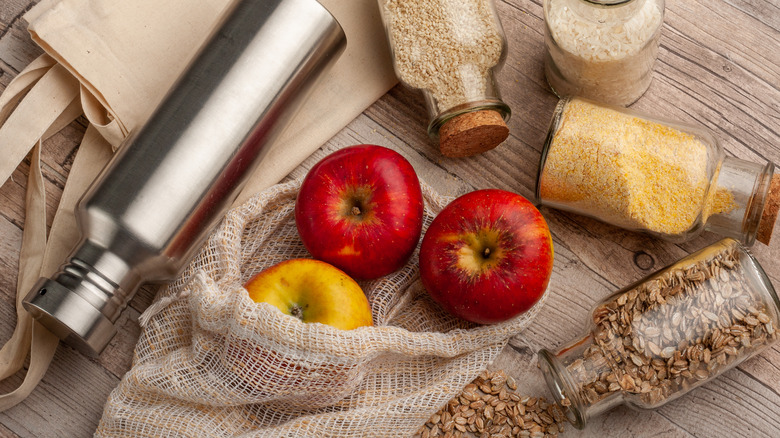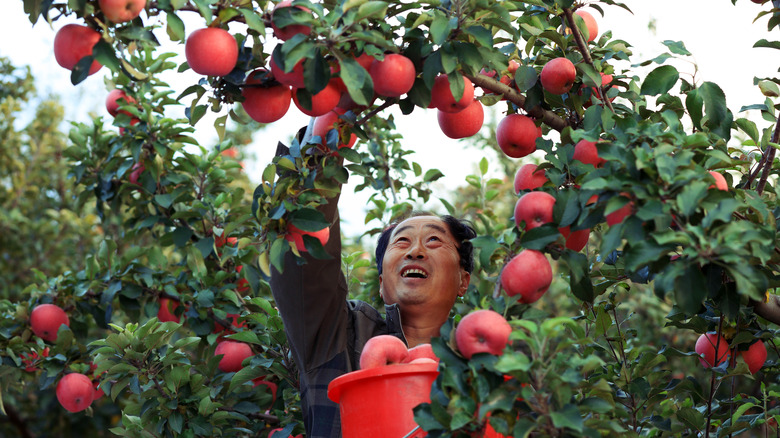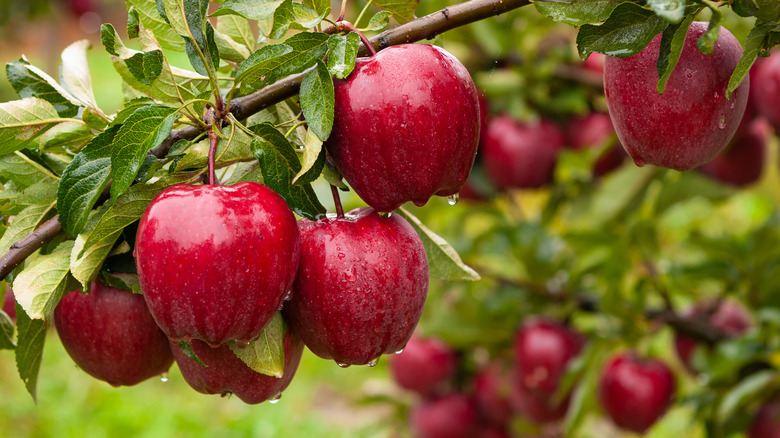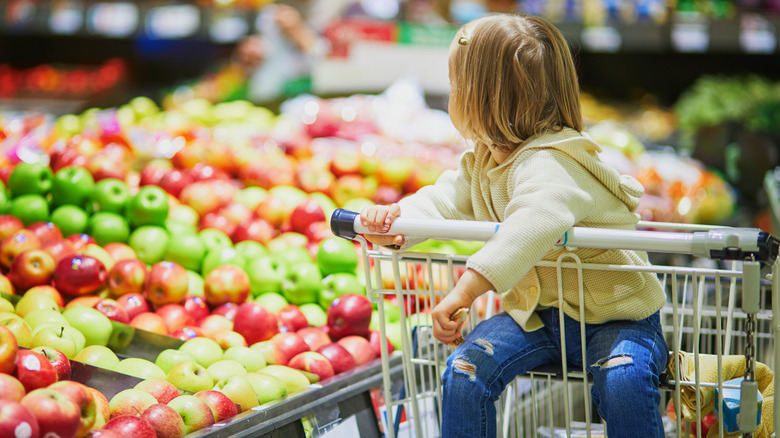Most Of The World's Apples Come From This Country
Apples, though we enjoy them throughout the year, are 100% a staple of fall. The fruit usually ripens in September and comes in thousands upon thousands of varieties which are harvested by hand and pressed into ciders and apple brandy, slathered with cinnamon and sugar, and baked into tarts, pies, donuts, and candied into caramel apples.
They are so old and widely enjoyed that the apple has starred in many folk tales, religions, and ancient myths such as the story of Adam and Eve, the Garden of Hesperides, Johnny Appleseed, and much more. The apple is an integral part of our global culture, and according to the National Library of Medicine, is widely used as the symbol of health in the west. You've most likely heard the common phrase "An apple a day keeps the doctor away" and Healthline seems to support the sentiment. When apples aren't coated in sugar and spice and everything nice, they are chocked full of soluble fiber and are considered nutrient-dense. But how did we end up with the apples we recognize today and where do they come from?
China's Apple City
According to current Statistica records, China -which is also the world's lead producer of peaches and tomatoes- is also the world's main producer of apples growing over 44 million metric tons of fruit between 2020 and 2021. The second largest producer is the European Union, and they only grew 11.72 million tons. China is clearly the reigning champion when it comes to apples, and Yantai is the country's main growing region.
China Daily reports that in Yantai alone, 170,000 hectares of apples are planted, producing about 3.6 million tons annually. This makes Yantai responsible for 16% of China's apple production. Apples, specifically, White Winter Pearmains, were introduced to the region back in 1871 by American missionaries, and since then the city of Yantai is famous for its experiments in farming cultivation and advancement, per Road Trips for Foodies. Today, Yantai apples are known for their lovely red color and crisp, sweet flavors.
The history of China's Apple
The apple, as we know it today, was actually shaped by China, specifically by the Silk Road that ran through it all the way across Asia to the Roman empire (via Britannica). The Silk Road wasn't just a trade route for marketable goods, it was also where religions, ideologies, and philosophies were spread, along with culture and food.
The United Nations ESO claims that the apple (Malus domestica) is a descendent of a wild apple (Malus sieversii) from China, but as people transferred the silk road over the course of 1,400 years people ate and transported seeds across thousands of miles and cross-pollinated with other apple species (via National Geographic). The history of apples in all their thousands of flavors and colors is thanks to the vast intermingling of species brought on by prolonged human interference. It's amazing how something you learned about in high school history class affected the fruit you packed into your lunch, but that just goes to show that actions sometimes have delicious, yet unexpected consequences.
Apples of the world
As the world's largest apple producer, China is also a huge apple exporter. As reported in 2021 by East Fruit China exported over 180,000 tons of apples to Vietnam. China also exported an additional 100,000 tons to the Philippines, Indonesia, and Thailand. The world is full of apples, and Select Health claims that the Red Delicious is one of the largest produced varieties worldwide, closely followed by the Gala is second and then by the Granny Smith. So whether you like them sweet, tart, or somewhere in between, there is plenty to go around.
But no matter where you get your apples, or what kind you may like, the Harvard School of Public Health recommends storing them in the refrigerator. Doing so will keep them fresh for at least 1-2 months or longer. Apples are climacteric which means that they continue to ripen after they've been harvested like bananas or peaches, and by keeping them in the cold, you can successfully prevent over-ripening from happening for quite a while.



